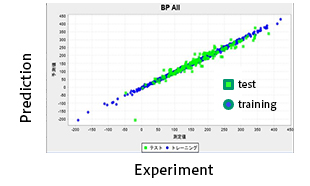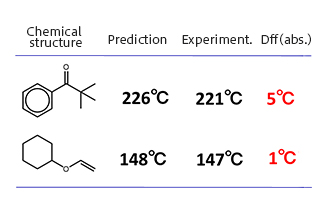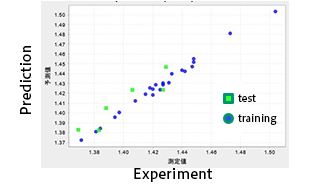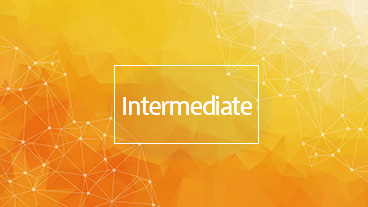Estimation of boiling point, refractive index, and dielectric constant by using machine learning [Courtesy of Industrial Technology Center of Wakayama Prefecture]
- Development of property prediction models using machine learning, transfer learning, and integration with simulations
- High-accuracy prediction of material properties
- Improvement of learning models using transfer learning
Development of property prediction models using machine learning, with examples of transfer learning and integration with simulations
A correlation between predicted and experimental boiling points from a machine learning model is shown. The GCN-based model shows high correlation for both training and test data, confirming the capability for reliable prediction.

Evaluation of thermal properties
A comparison between predicted and measured boiling points for new compounds is shown. Predictions were made for two types of compounds, both of which showed good agreement with measured values.

Evaluation of optical properties
A learning model was constructed using 658 refractive index data from the literature, yielding good prediction accuracy for hydrocarbon compounds. In contrast, errors were large for silicon-based compounds, so transfer learning was performed with an additional 28 data points, significantly improving prediction accuracy. Transfer learning enabled efficient model enhancement with a small amount of data.

[2] (in Japanese) https://www.wakayama-kg.jp/docs/keisankagaku-jirei-16.pdf;
https://www.wakayama-kg.jp/docs/keisankagaku-jirei-17.pdf
[3] Presentation Material of Industrial Technology Center of Wakayama Prefecture (WINTEC) included in J-OCTA Special Lecture "Introduction of Materials Development by Materials Informatics"
[4] “AIST Materials Gate Data Platform” (DPF)





